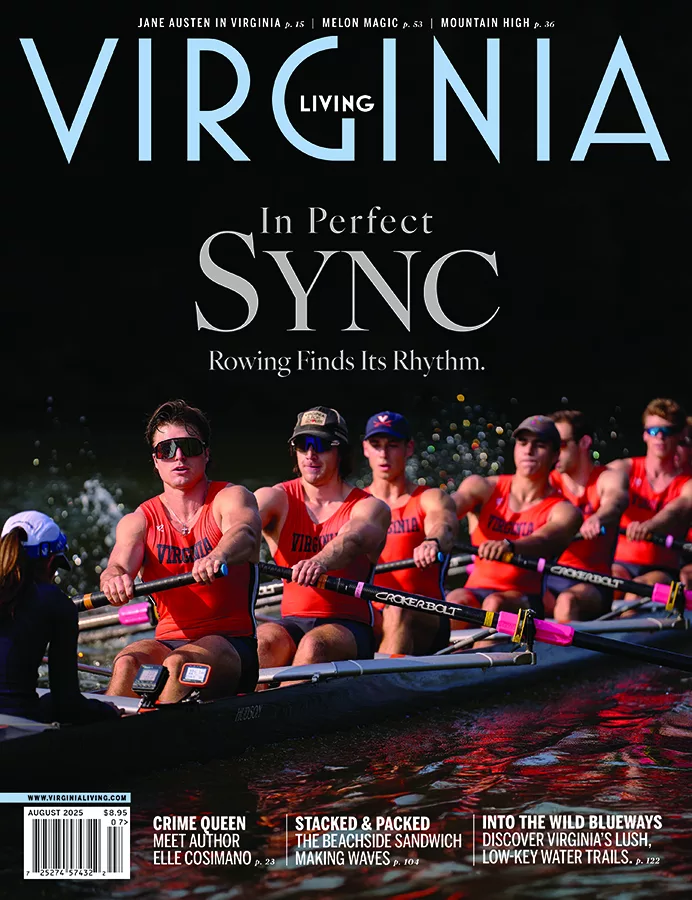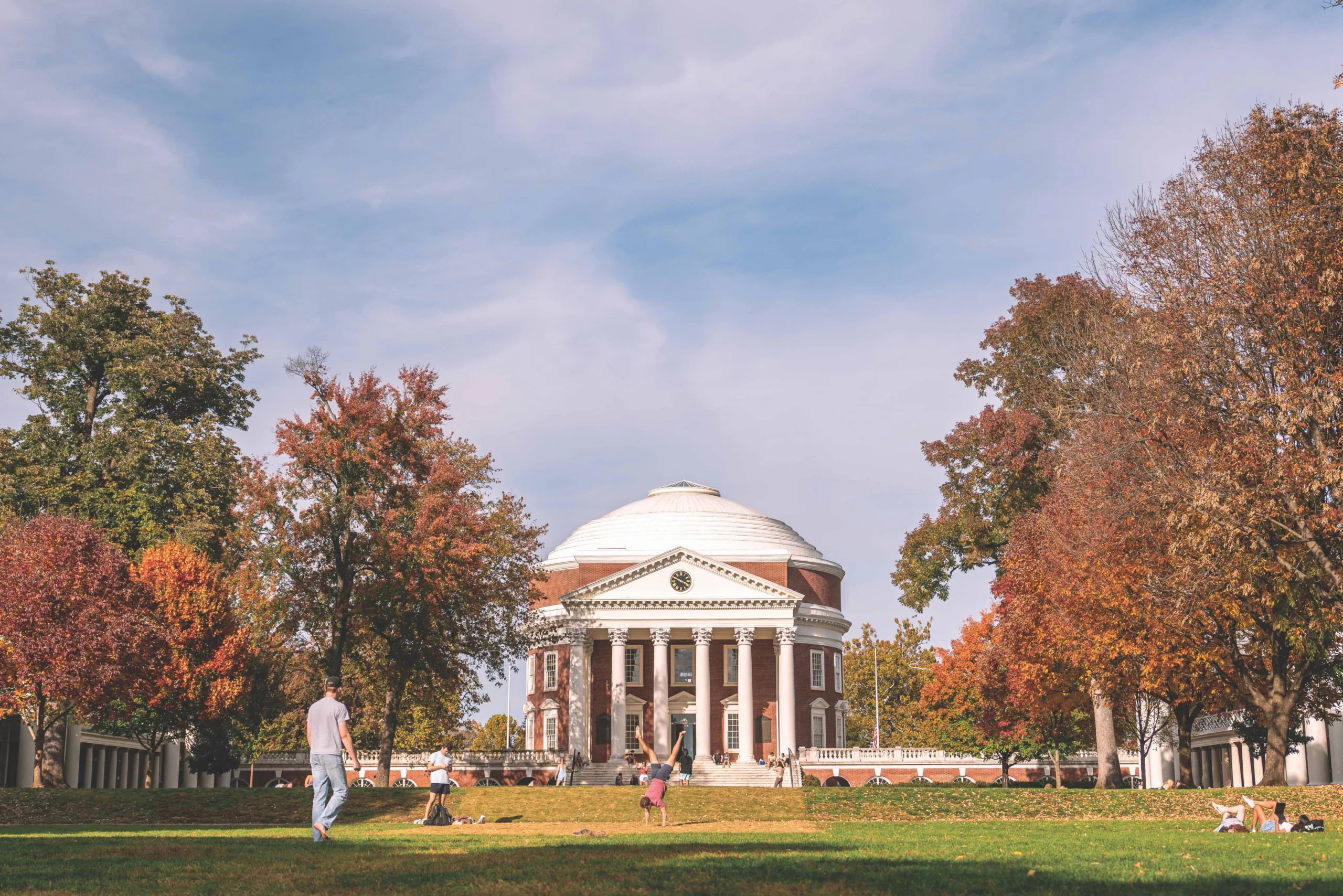Virginia’s earliest Christmas celebrations.

(Illustration by Robert Meganck)
The first Virginia Christmas found the Jamestown adventurers far from home and far from merry. Although it was spring when the three English ships landed in the New World, the men had so neglected the fundamentals of survival in their rush for gold and silver that winter found them freezing, starving and utterly dependent upon the Powhatan Indians for food. To make matters worse, the winter of 1607 was one of the coldest ever.
Captain John Smith, leader of the expedition, said nothing of that first Christmas in his book, The Generall Historie of Virginia. He and his ego were focused on his own exploits—he had been taken prisoner by Chief Powhatan in early December, saved by Pocahontas and released shortly after New Year’s Day.
Captain Smith did note the holiday in 1608. Circumstances were similar: the colonists still in dire straits, Smith once again trapped at an Indian village. But this time, it was a severe storm that kept him and his men at Kecoughtan village (now Hampton). “The extreame winde, rayne, frost and snow,” he wrote, “caused us to keepe Christmas among the Savages, where we were never merrier, nor fed on more plentie of good Oysters, Fish, Flesh, Wild-foule, and good bread; nor never had better fires in England.”
To the settlers, “keeping Christmas” meant food and revelry. Back home in England, lavish feasts were the heart of every holiday gathering. An upper-class Englishman was expected to entertain his neighbors with his best food and strong spirits on Christmas Day. But for many, the season from Christmas Eve until Twelfth Night was little more than an excuse for riotous disorder and debauchery—a December Mardi Gras that easily spilled over into violence. Even caroling was condemned as disgraceful, “generally done in the midst of Rioting Chambering [fornication] and Wantonness.” The Puritans of New England were determined to stamp out the holiday and did so quite thoroughly in Massachusetts, where Christmas was not celebrated until it was “tamed,” over 200 years later.
The more raucous customs did not take root in Virginia, possibly because the colonial population was too spread out to permit wandering mummers and carolers, but cities like Philadelphia and New York struggled with Christmas’ “mad mirth” until the 1840s. Once tobacco had set the struggling Virginia colony on its feet, early landowners could indulge in holiday observances, and some of the old English customs were transplanted to Virginia’s fertile soil.
In 1686, a Frenchman named Durand was traveling the colonies, recording his observations in a journal. Shortly before Christmas, he stopped at the home of Colonel William Fitzhugh, “whose houses stand along the banks of the great Pethomak [Potomac] river.” There, “[Fitzhugh] treated us royally, there was good wine and all kinds of beverages, so there was a great deal of carousing. He had sent for three fiddlers, a jester, a tight-rope dancer, an acrobat who tumbled around … all the entertainment one could wish for.”
For the vast majority of early Virginians, however, Christmas probably meant no more than a worship service at church, if one were near, and the best food and spirits they could afford to set on the table. For indentured servants, Christmas rarely brought more than a welcome respite from work and an extra ration of food and drink. And the slaves? Most during the 1600s had been born and raised in Africa and brought to North America. Unfamiliar with Christianity, their only interest in Christmas would have been lighter work and extra food. During the second half of the Colonial period, they began to develop their own observances.
The tradition of decking the halls with boughs goes back to pagan times. Early Christian leaders tried to abolish these dangerous heathen relics, but the custom would not be stamped out, so the church decreed that holly now symbolized the crown of thorns, and its berries the drops of blood on Christ’s brow. Jamestown settlers probably decorated with available greens as they did in London, where a contemporary noted, “Every man’s house, as also their parish Churches, were decked with Holm, Ivy, Bayes, and whatsoever the season of the yeere afforded to be greene.”









